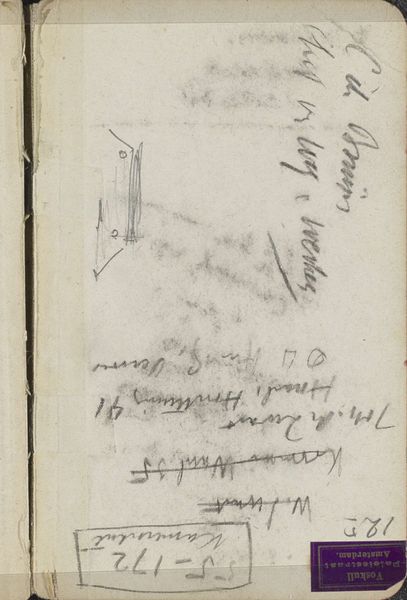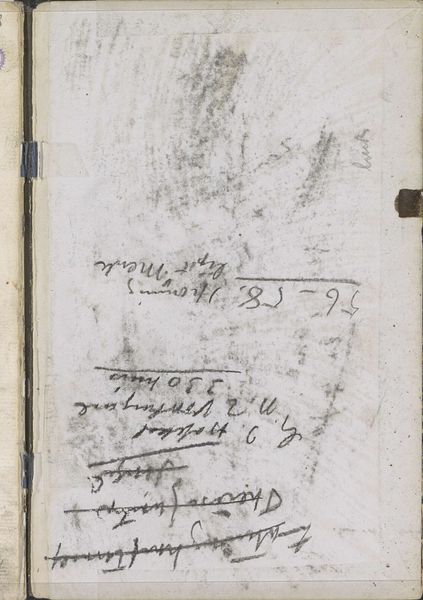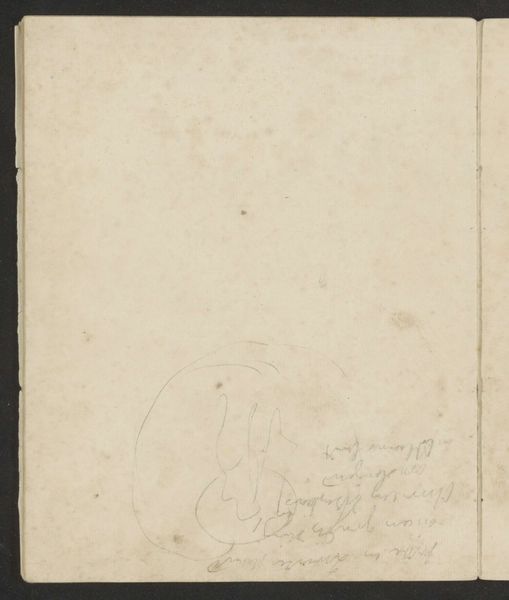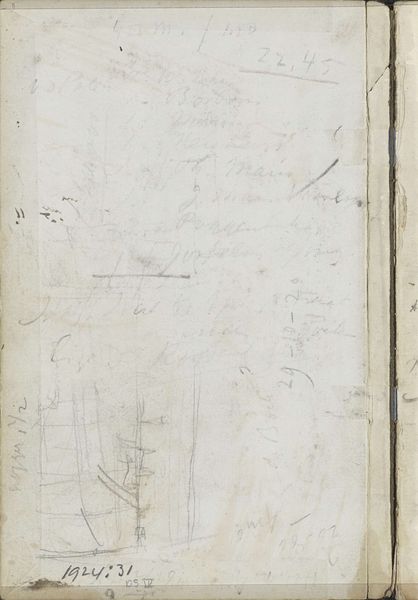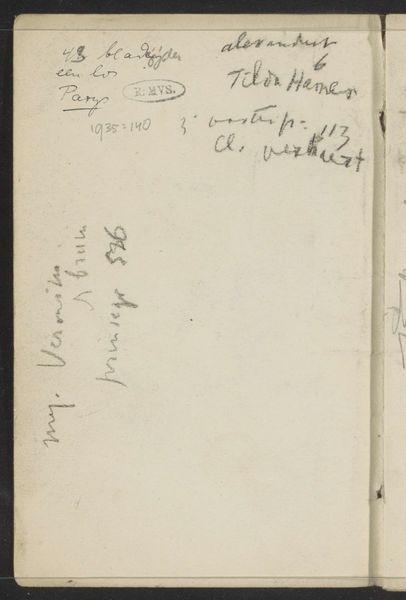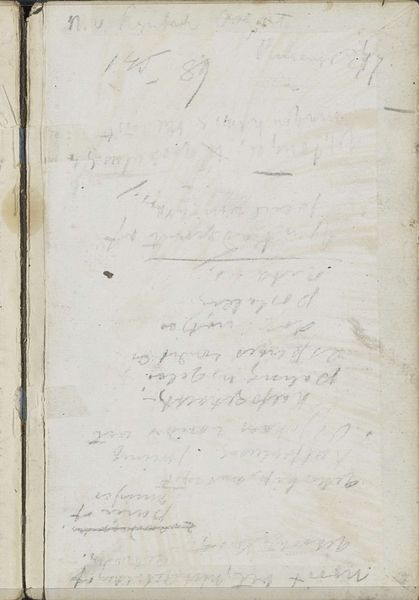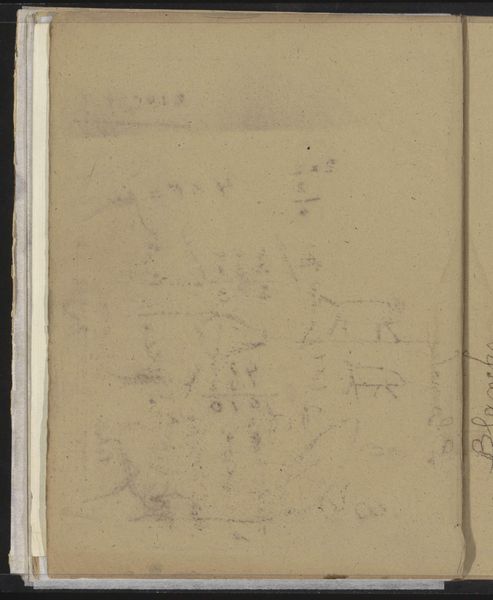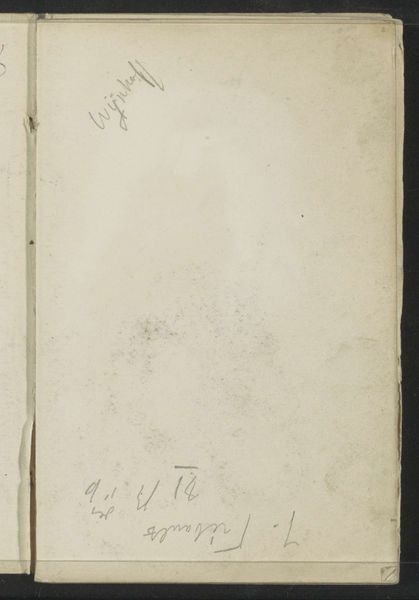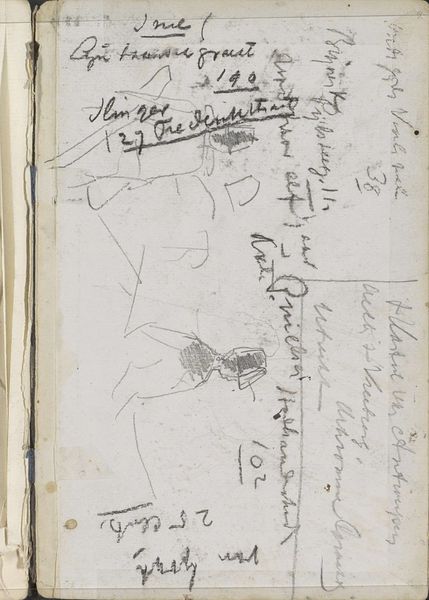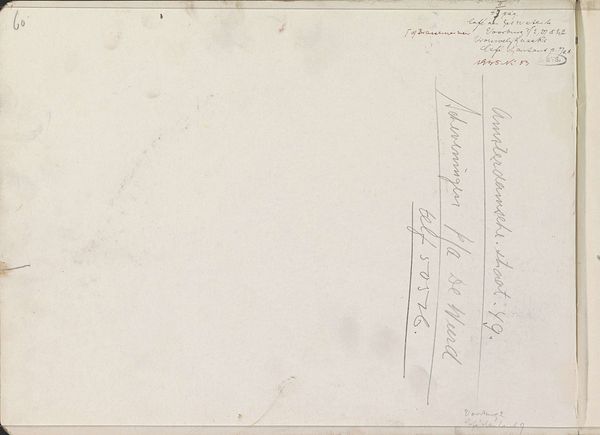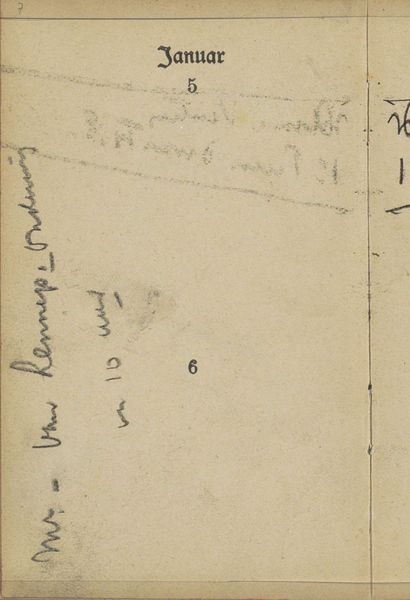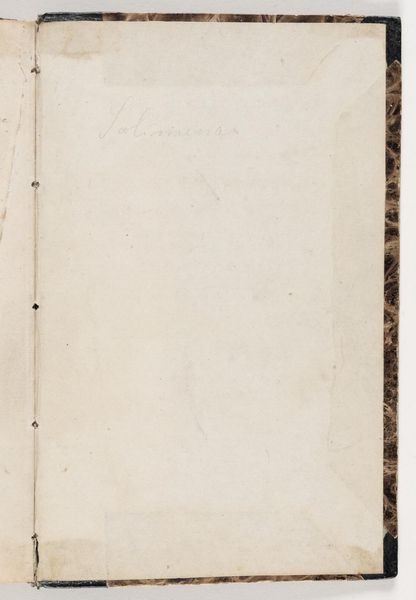
Copyright: Rijks Museum: Open Domain
Editor: So, this is "Annotaties" by George Hendrik Breitner, created sometime between 1895 and 1898. It's a drawing and collage on paper, using ink. At first glance, it looks like a page from a sketchbook, filled with notes and faint sketches. What do you see in this piece? Curator: This work, like many of Breitner’s pieces, serves as a crucial primary source. It reveals how artists documented their processes during a transformative period of rapid urbanization and social change. We see, through the artist's annotations and sketches, an insight into the daily life of late 19th-century Amsterdam. What social realities might these fleeting glimpses represent, and how did Breitner’s perspective – as a man within a specific social class – shape those representations? Editor: That’s interesting. I hadn’t really thought about it as a document of its time. So, the social class influenced what he saw and how he recorded it? Curator: Precisely. Considering class dynamics helps us to dissect the narratives within the artwork. The women he painted, for example - what agency did they possess within the context of the male gaze, both his and the assumed viewer's? Understanding Breitner’s social position unlocks layers of meaning. Editor: It's amazing how much context changes the way I view it. It’s no longer just a page from a sketchbook, but a snapshot of a very specific social and historical moment. Curator: Exactly. And this snapshot carries with it the weight of the artist's own identity, his perspectives and biases that influenced his art. Editor: I'll definitely look at art differently now! Thanks!
Comments
No comments
Be the first to comment and join the conversation on the ultimate creative platform.
